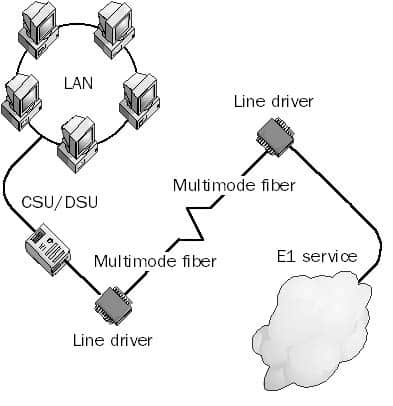E-Carrier is the digital telecommunications services backbone system of Europe, a format standardized by the International Telecommunication Union (ITU).
What is E-Carrier?
The digital telecommunications services backbone system of Europe, a format standardized by the International Telecommunication Union (ITU).
E-carrier services were developed in the 1970s and became widely available in the 1980s. E-carrier services can be used for wide area network (WAN) connections, for high-speed Internet connections, for private videoconferencing services, and for public frame relay services. E-carrier services are generally available wherever the parallel T-carrier services are not.
E-carrier transmissions are graded E1, E2, and so on in order of increasing transmission speeds. These different service grades are multiples of the basic DS0 data transmission rate, similar to the T-carrier system of North American telecommunications carriers.
The E-carrier service rates are specified by the organization CEPT (Conférence Européenne des Administration des Postes et des Télécommunications, or European Conference of Postal and Telecommunications Administrations). The most popular of these services, E1, is also the slowest. E1 transmits data at speeds of up to 2.048 Mbps over two pairs of twisted wires. It consists of 31 separate 64-Kbps DS0 channels multiplexed together, each of which can carry either a voice conversation or a stream of data. E1 is sometimes referred to as 2-Meg.

The E-series transmission rates are shown in the table included in the article on DS0 elsewhere in this work. E-carrier lines use 8 bits per channel for encoding signals and do not rob bits for control signals as T-carrier lines do.
NOTE
If the E1 service entering your customer premises needs to connect directly to a different building, you have two solutions. First, you could have the service provider extend the E1 line to the other building, thus moving the demarcation point (termination point) of the line. This could be costly, however. A simpler solution might be to connect the E1 line to a fiber-optic line driver, lay down a fiber-optic cable from the line driver to a similar driver in the other building, and then connect the remote line driver to your E1 equipment.